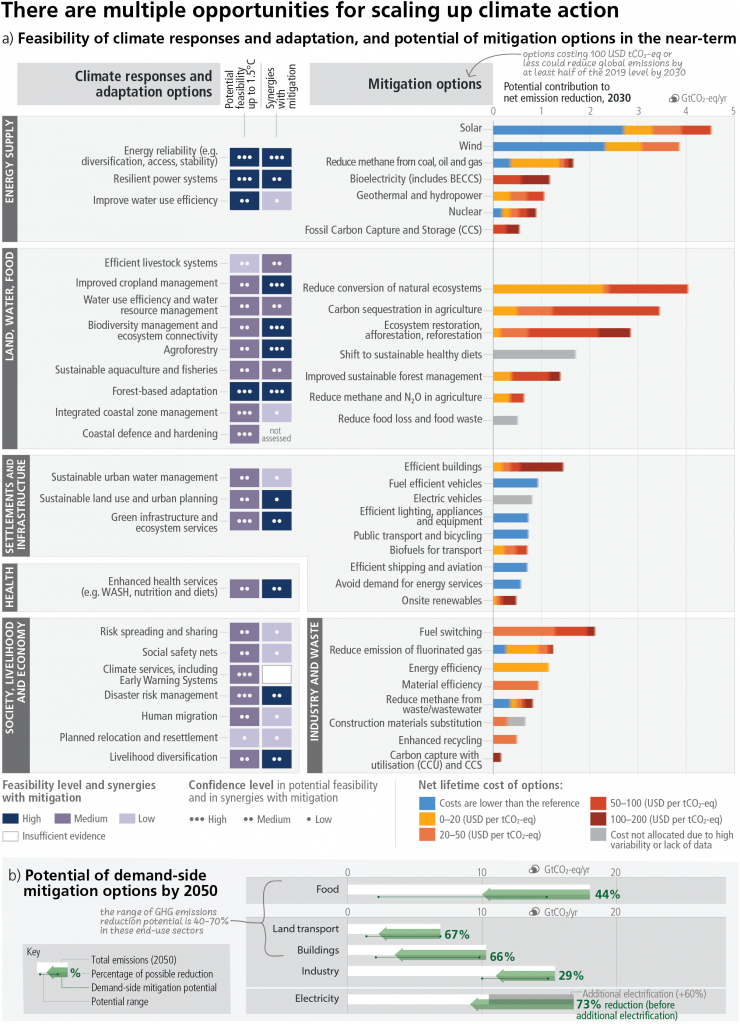Solar and wind energy options for mitigating climate change are “technically viable, are becoming increasingly cost effective and are generally supported by the public,” said the Intergovernmental Panel on Climate Change (IPCC) in a new report. It said other actions with general support are electrification of urban systems, urban green infrastructure, energy efficiency, demand-side management, improved forest- and crop/grassland management, and reduced food waste and loss. Other forms of low carbon power generation would make less of a contribution (see below).
The Panel highlighted “sustained decreases” in the unit costs of solar energy (down 85%), wind energy (down 55%), and lithium ion batteries (down 85%) between 2010 and 2019. There was now ten times the deployment of solar and 100 times the EV deployment of 2010. It said, “Maintaining emission-intensive systems may, in some regions and sectors, be more expensive than transitioning to low emission systems”.
However it said the adoption of low-emission technologies lags in developing countries, due in part to limited finance, technology development and transfer, and capacity. Climate finance flows have increased over the last decade and but growth has slowed since 2018. Financing for fossil fuels is still greater than those for climate adaptation and mitigation In 2018 finance flows remained below the collective goal under the UNFCCC and Paris Agreement to mobilise $100 billion per year by 2020.
